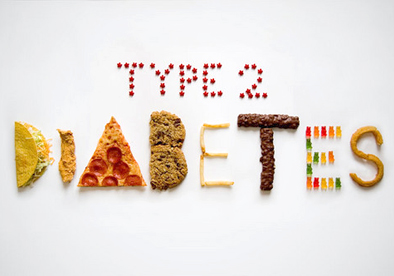The chronic complications of diabetes are typically classified as microvascular, macrovascular, or neuropathic.
Microvascular complications result from the thickening of capillary and arteriole basement membranes. Although these changes occur in the small blood vessels throughout the body, they most commonly affect the eyes and kidneys, resulting in retinopathy and nephropathy, respectively.
Macrovascular complications of diabetes include coronary artery disease (CAD) and peripheral vascular disease. They result from accelerated atherosclerotic changes in the walls of the coronary arteries and the large and medium blood vessels in the legs and feet.
Diabetic neuropathy, the most common type of chronic complication, can be classified as peripheral (affecting the nerves of the legs and feet), autonomic (affecting involuntary nerves of the internal organs, such as the nerves that innervate the bladder muscles or cardiovascular system), or focal (affecting a single nerve or group of nerves). About 12% of patients have neuropathy when they’re diagnosed with diabetes. After 25 years, that number increases to about 60%. If your patient has Type 2 diabetes, she may have sensory and autonomic dysfunction at the time of diagnosis because Type 2 diabetes is commonly diagnosed long after it begins.
As with many other chronic complications of diabetes, the cause of diabetic neuropathy is poorly understood. However, several theories offer possible explanations. In one theory, vascular changes that occur with diabetes may account for many pathophysiologic changes. For example, because many patients with diabetes also have cardiovascular disease, the blood flow to the capillaries that supply nerve tissue may become impaired, resulting in tissue ischemia or necrosis. In another theory, metabolic changes are the culprit. For example, sorbitol and fructose accumulate in the diabetic patient’s nerve tissue, and the concentration of myo-inositol decreases in the Schwann cells of nerve tissue. Because less myoinositol is available, the myelin sheathes have less protection, and nerve impulses can’t be conducted.
Stages of Diabetic Nephropathy
In a patient with Type 1 diabetes, diabetic nephropathy typically progress through five stages.
Stage I
Stage I, which occurs soon after the onset of diabetes, is characterized by renal hypertrophy, an increased glomerular filtration rate (GFR), and an increased glomerular capillary surface area. With tight blood glucose control, the GFR may return to normal. Microalbuminuria may develop, but it can also be reversed with tight blood glucose control.
Stage II
Stage II occurs about 5 years after the onset of diabetes. During this stage, the glomerular capillary basement membrane thickens, and mesangial matrix material accumulates. This reduces the filtration surface area and results in scarring. The GFR remains elevated.
Stage III
Also known as incipient nephropathy, stage III occurs 10 to 15 years after the onset of diabetes. Characteristic signs include persistent microalbuminuria, a high GFR, and increased blood pressure.
Stage IV
Stage IV develops 15 to 25 years after the onset of diabetes. Signs and symptoms include hypertension, retinopathy, and proteinuria that can be detected by a urine dipstick test. The GFR steadily decreases. Intensive treatment at this stage can help slow the progression of the disease to stage V.
Stage V
In stage V, renal failure progresses to the point that the patient needs dialysis or a kidney transplant. This stage generally occurs 20 to 30 years after the onset of diabetes. Signs include elevated blood urea nitrogen and creatinine levels and a rapid decline in the GFR.
